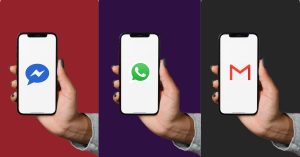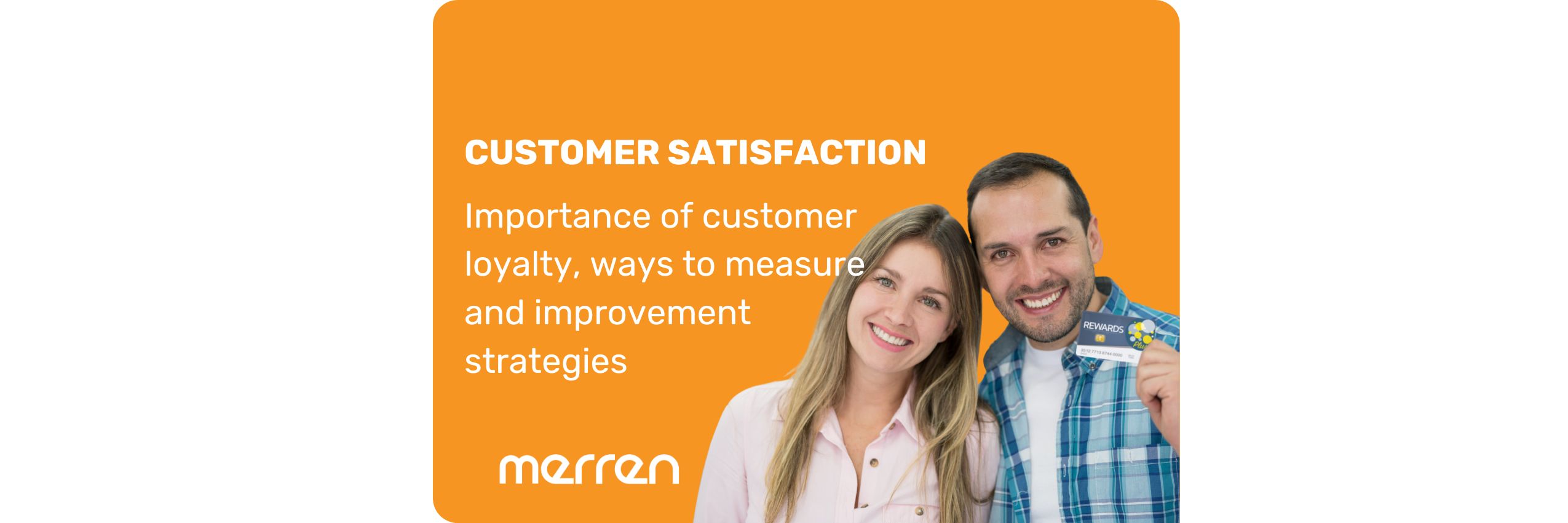Well established brands such as Apple Inc consistently maintain their buyer base year on year. People are ready to line up before the store for new product launches. Similarly, Starbucks also enjoys an enviable share of the customer base among its contenders. What causes this massive influx of loyal customer base? The answer lies in the fact that these global brands can offer uniformity in customer experience across channels.
Customer loyalty is an essential aspect of any business strategy. It involves the ongoing preference of customers to purchase from a specific brand. It is the result of consistent positive emotional experiences, physical attribute-based satisfaction, and perceived value of an experience. Loyal customers typically exhibit repeat purchase behavior and endorse the brand to friends and family.
In this blog we will understand what customer loyalty is, its importance, how to measure it and best practices to maintain ongoing loyalty.
What is Customer Loyalty?
Customer loyalty is the process of choosing a particular product or service repeatedly over competitors. Loyal customers, also known as brand advocates, will not be swayed by competitor’s pricing or strategies. They usually pay a price premium to ensure that they get the same quality of service with each purchase. Customer loyalty is the result of exceeding customer expectations across every channel.
Brand advocates encourage customer loyalty. They offer free promotion through word-of-mouth marketing. They share their positive experiences with their social and professional circles. The biggest upside to this is acquiring new customers without significant marketing expenditure.
Why is customer loyalty important?
Acquiring new customers can cost up to five times more than retaining existing ones. Retention involves maintaining relationships with existing customers by ensuring they are satisfied with the products and services. This not only reduces acquisition costs but also leads to increased profitability as loyal customers are more likely to make repeat purchases.
The impact of repeat customers on long-term revenue streams is substantial. They tend to buy more frequently and spend more than new customers. Loyal customers are also more willing to try additional offerings. Focusing on customer retention can secure a steady revenue stream and improve their financial predictability.
How to Measure Customer Loyalty?
There are qualitative and quantitative ways to measure customer loyalty. However, in the world, there are trends and patterns that dictate what people think of your brand. Here are 6 major ways to assess loyalty metrics.
1. Customer Satisfaction Score
As the name suggests, it measures the current satisfaction level of a buyer with a certain transaction, product or service. The CSAT metric uses a scale based on a simple question that will ask respondents their satisfaction level mapped on a scale of 1 to 5. However, the CSAT metrics measure transactional satisfaction. Not to rule out its importance, it is indeed necessary to understand a consumer’s experiences at every touchpoint. Collectively, it can add up to positive experiences that can dictate their overall loyalty.
2. Net Promoter Score
Established by Bain & Company, the Net Promoter Score is a gold standard to understand brand loyalty and advocacy. Higher NPS scale means greater brand advocacy. Due to its standardised format, the NPS metric is widely used across industries. It has a simple single question as follows: “How likely are you to recommend us to family and friends?”. This convenient scale segregates respondents into promoters , detractors and passives.
Different industries have a set benchmark for their NPS numbers every year. Mapped on a scale of -100 to 100, greater NPS values mean a good sign for the company.

3. Customer Loyalty Index
Customer Loyalty Index (CLI) and Net Promoter Score are the scales from the same metric. However, CLI dives deeper with more detailed questions on repurchase intent, recommendation likelihood, brand engagement levels and overall satisfaction and open-ended feedback.
4. User testimonials and reviews
Website testimonials, third party reviews and social media mentions are a great way to track buyer satisfaction and post-purchase experiences. Every brand is enlisted on Google business or ecommerce sites such as Amazon. This enables people to leave reviews along with product photos. This qualitative assessment of loyalty can help brands identify happy customers and close the feedback loop on people who have not had the best of experience. Additionally, social media has also made it easy to understand people’s experiences with various brands. The need for omnichannel is greater in the digital age. It can determine how companies deal with public complaints and offer elevated experiences in the process.
5. Customer Health Score
Customer health score (CHS) can assess a buyer’s relationship with the brand including number and frequency of purchase. CHS also takes into account their complaint tickets and their reviews on omni-channel platforms and customer feedback surveys. A buyer’s health score can determine if people will continue being brand advocates or they are closer to churn. CHS takes details of purchase and engagement history into account, both qualitative and quantitative.
6. Emotional and sentiment analysis
Sentiment analysis may not directly relate to loyalty but it is a contributing factor. People look for a humanized support to solve their product or service related issues. Emotions can be a strong driving factor for repeat purchase. It can determine the hassle people have taken to undergo a certain experience or expectation. Assessing emotions using AI can help CX professionals understand friction points and deploy strategies to solve it. Positive emotions can lead to repeat purchases hence driving loyalty.
7 Stages of Customer Loyalty
Customer loyalty typically develops through several stages, each reflecting a deeper commitment to a brand. Here’s an outline of the main stages:

1. Awareness
This is the initial stage where people become aware of the brand, often through advertising, social media, recommendations, or promotions. They have not yet made a purchase but may show curiosity or interest.
2. Exploration
Here, people are not yet buying customers but are interested enough to explore the brand offerings. They might research products, read reviews, or seek a demo (if it is a service or a product related query). This stage is about evaluating whether the brand meets their needs.
3. First purchase
The first transaction is a critical milestone. A positive initial experience—smooth purchasing, timely delivery, and good product quality—lays the groundwork for future loyalty.
4. Post-purchase evaluation
After making the first transaction, people become customers. They assess the value and quality of their experience. If they’re satisfied with the product / service, they’re more likely to consider buying again. Negative experiences, however, can end the relationship here.
5. Repeat purchase
A second or third purchase signals a growing sense of loyalty. Customers start to trust the brand, returning for more of what they liked the first time. They become comfortable with the brand and may start to choose it over competitors.
6. Advocacy
At this stage, loyal buyers become advocates. They start to spread positive word-of-mouth, leave encouraging reviews, and recommend the brand to friends and family. They actively promote the brand.
7. Commitment
This is the highest level of loyalty. Committed customers not only continue to buy from the brand but also show an emotional connection. They’re invested in the brand’s success, remain loyal even if prices increase, and defend it against competitors.
Successful Strategies to Encourage Customer Loyalty
People are willing to pay a price premium to be able to access an exemplary customer experience. Zappos, a shoe brand, famously attended a customer call for over nine hours. This incident bolstered the brand’s image as a customer service icon and set it apart in the e-commerce space, particularly in the shoe industry.
It is important to note that loyalty and experience is an ongoing process. Every strategy collectively contributes to increasing brand advocacy. Here are some strategies that can reinforce positive brand image.
1. Offer active omni channel support
The first aim is to reduce friction points for people while they are reaching out to the customer support team. Reduce waiting times and be available across multiple channels. Your user base will most likely be active on various channels. Focusing on a multichannel approach can help you reduce cross channel pain points, clear backlogs of grievances and manage the number of support tickets. Most commonly used channels include website support, social media channels, chatbot requests, phone calls etc.

2. Capture onboarding and post-purchase experience
There are two primary touchpoints that can make a lot of difference- onboarding and post-purchasing experiences. Friction-free onboarding experience can bring customers but an active post-purchase assistance will retain them. Launch relevant surveys that enable people to share their experiences, ratings and qualitative conversations using Merren CX. However, there are industries that have a lengthy post-purchase customer journey. For example, the automobile industry can gather driving experiences from users after completing 10,000 miles on a specific car. This can help brands obtain critical gaps and ensure that they cover these drawbacks for the next buyer.
3. Keep processes simple to avoid churn
Customers get frustrated with complicated processes. No one wants to spend their valuable time dealing with lengthy or confusing steps. That’s why it’s essential to keep processes simple and smooth.
Whether it’s placing orders, managing deliveries, handling returns, resolving issues, or answering questions, always aim for straightforward, easy-to-follow steps. Streamlined interactions create a seamless journey for customers. After all, the main focus is to make a positive first impression or impact that will encourage them to return.
4. Offer loyalty benefits and rewards
Studies have shown that a benefit of even a $10 coupon reward can encourage people to view your brand positively. Offering shopping rewards can be placed strategically. It can depend on purchase value, number or value of transactions and years spent being a part of the brand ecosystem. However, when creating customer feedback surveys, offer apt survey rewards to encourage responses. It can be in the form of a new coupon code, freebie or a complimentary product delivery. However, make sure that the survey reward is appropriate.
5. Close the customer feedback loop
Closing the customer feedback loop goes beyond recording a conversation. It entails offering a humanized approach to a problem, investigating the issue and offering to improve the need-gap. People truly appreciate when brands give a listening ear and improve their experiences with the help of public consensus. This encourages brand advocacy and brings in more word-of-mouth referrals. One way to make this process efficient is to automate workflows like scheduling customer feedback surveys, collecting data at transactional touchpoints and analyzing sentiments with the help of AI to avoid batch processing.

Key Benefits of Customer Loyalty
Increased Customer Lifetime Value (CLTV)
- Loyal customers contribute a higher CLTV. They tend to make repeat purchases.
- CLTV represents the total revenue a business can expect from a customer over the duration of their relationship.
- These customers show brand preference, have reduced price sensitivity, and scale sales.
- They create opportunities for upselling and cross-selling.
Positive word-of-mouth marketing
- Loyal customers act as advocates, often recommending the brand to others.
- Recommendations from satisfied customers are trusted more than traditional ads, leading to higher conversion rates.
- This form of organic marketing reduces customer acquisition costs.
Competitive advantage and sustainable growth
- Loyal customers are less likely to switch to competitors, especially during market shifts.
- Investing in loyalty strategies supports long-term, sustainable growth for the business.
Improved customer insights
- Loyal customers provide valuable data through their purchasing patterns and feedback.
- Insights from loyal customers help refine marketing strategies, product development, and customer service.
Reduced marketing costs
- Committed customers require less marketing spend to retain.
- Retention-focused strategies can be more cost-effective than constantly acquiring new customers.
Conclusion
Customer loyalty is a critical aspect of business success. Brands get numerous benefits such as increased CLTV, positive word-of-mouth marketing, and reduced acquisition costs. Effective strategies to encourage loyalty include personalized customer experiences, loyalty programs, and continuous improvement through feedback.
The future of customer loyalty lies in leveraging advanced technologies like AI-powered personalization and enhanced loyalty programs. Using Merren, you can 10x your customer experience protocols without hassle. Sign up for a 14 day free trial and get started today.

